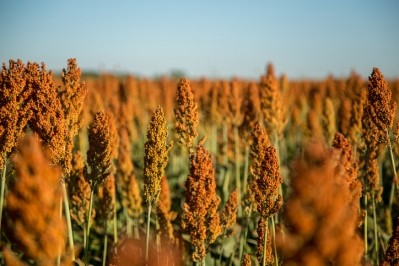Upcoming US, China meeting raises some feed crop producer hopes

Trade uncertainty between the two countries and a series of back-and-forth tariffs has caused a reduction in trade for some feed ingredient producers including soybeans and sorghum.
China was a top market for US soybeans, accounting in 2017 for sales of about $14bn, according to the American Soybean Association. The country imported about 31% of the soybeans produced in the US.
Similarly, China was the largest international market for sorghum, importing about 4.2m metric tons in the 2017/18 marketing year, reported the US Grains Council.
However, the upcoming meeting between leaders of the two countries is hoped to bring positive momentum to trade discussions, said Tim Lust, CEO with the National Sorghum Producers.
“We are hopeful for movement on the trade side that allows the sorghum trade to restart with China in 2019,” he told FeedNavigator. “In recent years China has become the largest buyer of US sorghum and we look forward to being able to provide our customers in China the sorghum they need as soon as possible.”
“We are excited that the dialog is happening between the two governments’ top leaders,” he added. “We remain optimistic that a solution can be found.”
Potential meeting outcomes
The loss of export opportunities to China has encouraged US soybean producers to diversify their markets, said Kevin Scott, American Soybean Association (ASA) director from South Dakota.
“There are a lot of potentials – the free trade agreement with Japan, that would be excellent, and we’re improving trade developments with the EU,” he told FeedNavigator. “North Africa is a strong market for soybeans right now they’re continuing to purchase more – Egypt, Morocco and Pakistan and Bangladesh –[there are] a lot of markets we’re spending more time developing and pursuing than what we had time and resources for earlier.”
“The lack of trade with China has given us a new direction,” he said. However, the loss of the market still “hurts” at the moment, especially for newer producers.
“It feels good to get back into a more diversified market,” he said. “I hope the quality of the product keeps the new customers happy and they decide we’re the people to buy soybeans from for our quality, our feeding quality – it could be a positive [long term,] but it hurts for right now.”
There was an awareness prior to the start of China’s tariffs on US soybeans that there needed to be an effort to expand the export market to other buyers, Scott said.
But, he said, the association also continues to value free trade. “We don’t like the tariffs and we don’t think that’s a great way to do business – it’s not free trade.”
An additional concern about the trade disruption is losing the long-term relationships that have been established during the last 35 years with buyers in China, he said.
However, there were issues between the two countries that needed to be addressed, including some that were agriculturally related, said Scott.
“Soybeans took the brunt of the damage in the US because we were the number two export,” he said. “So we were one of the first that got hit.”
Regarding the meeting in Buenos Aires, producers are hoping to see positive momentum and potentially the removal of the tariffs on soybeans, he said. “I don’t know if the other tariff issues have fixable points yet, but as far as tariffs on soybeans, they could go back to where they were without much issue,” he added.
“We have great hope that the presidents of China and the US will come together and get something done,” said Scott. “The Chinese need soybeans, they import a big share of their soybeans – they’re going to get them from somewhere but we’d love them to get them from us.”
The international trade uncertainty also has been a factor for corn producers, said Lesly McNitt, director of public policy with the National Corn Growers Association (NGCA).
“China is an important market for us as well,” she told us. It is time to return to the “offense” in terms of expanding markets for corn producers, she added.












